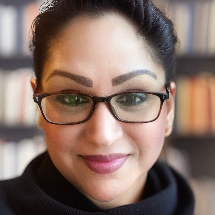Learn / A Guide to the Biopsychosocial Model of Mental Health
A Guide to the Biopsychosocial Model of Mental Health


July 24th, 2023| Clinically Reviewed by
Key Points
- The biopsychosocial model considers biological, psychological, and social factors.
- As such, treatment plans are holistic, addressing all aspects of a person's life.
- Under this model, detailed assessment leads to highly personalized treatment plans.
According to the biopsychosocial model of mental health, there are 3 different dimensions of health and illness. Clinicians believe biological, psychological, and social factors can all affect your well-being.
Within this model, you’ll receive holistic treatment. Your care plan will include various therapies that focus on each aspect of your life. This comprehensive approach addresses your needs as a whole person, instead of just treating isolated symptoms.
Understanding the Biopsychosocial Model
George L. Engel introduced the biopsychosocial model of mental health1—sometimes called the BPS model—in 1977. Since then, it’s gained widespread support among mental health professionals.
According to Engel, health problems don’t happen in a vacuum. He defined 3 areas that contribute to any diagnosis:
- Biological
- Psychological
- Social
These 3 dimensions of wellness have a complex relationship. Having symptoms in any one of these areas can cause problems in the other two.
For example, seasonal allergies are a biological issue. If you work outside, severe symptoms might force you to take a sick day. That could affect your income and your family, which are social issues. Sneezing all day can also put you in a bad mood, affecting your psychological state. What starts as a simple immune response can impact every aspect of your life.
When you understand how your symptoms support each other, it’s easier to find the right types of treatment. For example, data shows that anger makes chronic pain more severe.2 If you have both of these issues, going to talk therapy for anger management could help you physically heal.
The BPS model draws clear distinctions between its 3 areas of focus:
Biological Factors
There’s a strong link between mental and physical health.3 On one level, this may seem intuitive. If you’re sick, you’ll probably have to rest instead of doing things you enjoy. But the connection goes much deeper. Having a heart attack, for example, raises your risk of depression. And some mental health issues, like PTSD, can have physical symptoms.4
Mental Health and Genetics
Many mental illnesses run in families,5 suggesting they might be genetic. However, until researchers can isolate the relevant genes, this will remain a theory. Today, experts believe that bipolar disorder, major depression, and schizophrenia, among other diagnoses, are likely hereditary.
The Neurochemistry of Addiction
Behavioral health problems can also have biological components. For example, the neurotransmitter dopamine plays a role in addiction.6 This naturally occurring chemical makes you feel a sense of reward.
When you have an addiction, the act of taking drugs stimulates the release of dopamine. That’s true no matter which drugs you’re using. Your brain can come to depend on substance use as the trigger to produce this essential neurochemical. In other words, you’ll only feel a sense of achievement when you drink or take drugs.
This chemical balance can get worse over time, making it harder and harder to quit. While that cycle is a biological process, it also has serious emotional consequences.
Psychological Factors
Psychological factors, like self-esteem, can affect your mental health.7 On its own, low self-esteem isn’t technically a symptom of mental illness. But it can lead to more severe issues. For example, one study found that people with less self-esteem had a higher risk of anxiety, depression, and attention problems.
Cognitive Processes
A cognitive process is the way your brain performs a task.8 Learning, decision-making, and paying attention are all examples of cognitive processes.
Mental illness affects your cognitive processes. For example, data shows that depression interferes with memory formation.9 And ongoing memory problems can affect your work, social life, and overall well-being.
This connection goes both ways. Poor cognitive processing10 increases your risk of developing a new mental illness. Without proper treatment, this can lead to a spiral of worsening symptoms.
Social Factors
Interpersonal relationships have a major impact on mental health.11 Social support lowers your risk of developing mental illness and addiction. And if you do have mental health issues, strong relationships improve your chance of recovery.
Cultural Norms
There’s more to your social life than relationships. Your cultural background also influences your mental health.12 That’s because your values affect the way you think about your behavior. In some cultures, for example, it’s okay to have a beer with friends after work. In others, drinking is strictly taboo. Either way, your beliefs may affect how you define alcohol abuse.
It’s important to find treatment that supports your values. With the biopsychosocial approach, clinicians may design a clinical care plan just for you. They may employ a variety of treatment methods, depending on your unique recovery goals.
Socioeconomic Status
Your economic status matters, too. Researchers correlate lower socioeconomic status with higher rates of mental illness.13 This is probably due to the chronic stress of financial insecurity. That stress can also damage relationships, cutting you off from valuable social support. And what’s more, a lack of resources makes it harder to afford mental health treatment.
Application of the Biopsychosocial Model in Assessment
Under the biopsychosocial model, treatment starts with a comprehensive assessment.14 This approach to diagnosis is the standard of care. In other words, experts agree that it’s an effective way to start planning your long-term recovery.
During the assessment, your care team will ask a series of questions15 about your physical, mental, and social well-being. These interviews are extremely detailed and may vary between providers. However, most assessments will include certain basic questions:
- Do you have any past or present medical diagnoses?
- Do you have any past or present mental health diagnoses?
- Do you have a family history of any physical or mental illnesses?
- What symptoms are you currently experiencing?
- Do you now, or have you ever taken illicit drugs?
- What is your living situation?
- How much sleep do you normally get in a night?
- Who is part of your support network? Does it include family, friends, healthcare providers, etc?
- What is your highest level of education?
- Are you currently employed?
Clinicians use this information to understand how your symptoms fit together. If you don’t already have a diagnosis, they may give you one before discussing treatment. Either way, the next step is to develop your plan of care.
Treatment and Interventions
Despite the evidence that supports it, biopsychosocial treatment is not widely available.16 One study found that in hospital settings, few doctors perform comprehensive assessments. Instead, most providers focus on physical symptoms. If you’d like to receive treatment under the BPS model, you may need to seek out a specialized program.
By definition, biopsychosocial care includes multiple types of treatment.17 Each one addresses a different aspect of your health. For example, your care plan might include some or all of these therapies:
- Biological: Medical care, nutrition counseling, physical therapy
- Psychological: Talk therapy, behavioral therapy
- Social: Family therapy, support groups
In many programs, your clinicians will work together18 to provide integrated treatment. You may meet with your care team as a group, and they may meet privately to discuss your case. This close communication allows them to track your progress and make adjustments to your care plan if necessary.
Limitations and Criticisms
While biopsychosocial assessment is the standard of care, this model has some limitations.19 Specifically, it focuses more on diagnosis than treatment. Without formal guidance on how to design a care plan, every provider takes a slightly different approach. This makes it hard for patients to know what they can expect during recovery.
Some experts argue that the biopsychosocial approach is outdated.20 Critics say that scientific breakthroughs “have changed the very face of psychiatry in the last few decades,” leaving Engel’s theory behind. This new research suggests that some mental health issues have purely biological causes. However, we need much more data before we can confirm these theories.
The BPS model is more holistic21 than other approaches—maybe to a fault. S. Nassir Ghaemi, Director of the Mood Disorder Program at Tufts Medical Center, explains that “its boundaries are unclear.” In the effort to include so many dimensions of health, Engel left room for practitioners to interpret information as they see fit. As a result, their personal biases may affect treatment. Biopsychosocial treatment “gives permission to do everything, but no specific guidance to do anything,” Ghaemi writes.
Future Directions and Implications
Despite these critiques, other experts say we can keep learning from this approach. For example, experts posit that focusing on the biopsychosocial model might reduce burnout among medical students.22 This could have far-reaching implications for the future of treatment. By setting an example for the next generation of healthcare providers, we might be able to reduce the stigma around mental illness.
Biopsychosocial care also offers unique opportunities during recovery. Because treatment is so personalized,23 you and your care team may develop a closer bond. That connection can help you commit to treatment more fully.
For a complete assessment of your physical, mental, and social needs, reach out to a treatment center and inquire with their admissions team. From there, you can begin planning the next phase of your recovery journey—and the rest of your life.
Frequently Asked Questions About the Biopsychosocial Model of Mental Health
What is the biopsychosocial model of mental health?
The biopsychosocial model of mental health recognizes that biological, psychological, and social factors all contribute to a person’s well-being and the development of mental health issues. It emphasizes holistic treatment that addresses each aspect of a patient’s life to provide comprehensive care.
What are the 3 dimensions of the biopsychosocial model?
The biopsychosocial model consists of 3 dimensions: biological, psychological, and social. These dimensions interact with each other, and symptoms in one area can impact the other two. By understanding these connections, healthcare providers can develop tailored treatment plans.
What types of treatment are involved in the biopsychosocial model of mental health?
In the biopsychosocial model, biological treatments may include medical care, physical therapy, and nutrition counseling. Psychological treatments may involve talk therapy and behavioral therapy. Social treatments may include family therapy and support groups. Integrated care, where different treatment providers collaborate, is common in this model.
-
Tripathi A, Das A, Kar SK. Biopsychosocial Model in Contemporary Psychiatry: Current Validity and Future Prospects. Indian J Psychol Med. 2019 Nov 11;41(6):582-585. doi: 10.4103/IJPSYM.IJPSYM_314_19. PMID: 31772447; PMCID: PMC6875848.
-
Shuchang H, Mingwei H, Hongxiao J, Si W, Xing Y, Antonius D, Opler M. Emotional and neurobehavioural status in chronic pain patients. Pain Res Manag. 2011 Jan-Feb;16(1):41-3. doi: 10.1155/2011/825636. PMID: 21369540; PMCID: PMC3052406.
-
Osborn DP. The poor physical health of people with mental illness. West J Med. 2001 Nov;175(5):329-32. doi: 10.1136/ewjm.175.5.329. PMID: 11694483; PMCID: PMC1071612.
-
“Expert Q&A: Posttraumatic Stress Disorder (PTSD).” American Psychiatric Association (APA). https://www.psychiatry.org/patients-families/ptsd/expert-q-and-a#:~:text=People%20with%20PTSD%20may%20also,pain%20and%20a%20traumatic%20event.
-
“Common Genetic Factors Found in 5 Mental Disorders.” National Institutes of Health (NIH), 12 May 2015, https://www.nih.gov/news-events/nih-research-matters/common-genetic-factors-found-5-mental-disorders.
-
Wise RA, Robble MA. Dopamine and Addiction. Annu Rev Psychol. 2020 Jan 4;71:79-106. doi: 10.1146/annurev-psych-010418-103337. PMID: 31905114.
-
Henriksen IO, Ranøyen I, Indredavik MS, Stenseng F. The role of self-esteem in the development of psychiatric problems: a three-year prospective study in a clinical sample of adolescents. Child Adolesc Psychiatry Ment Health. 2017 Dec 29;11:68. doi: 10.1186/s13034-017-0207-y. PMID: 29299058; PMCID: PMC5747942.
-
Smith, Anderson D., and Andrew Kelly. “Cognitive Processes.” The Encyclopedia of Adulthood and Aging, edited by Susan Krauss Whitbourne, John Wiley & Sons, Inc., 2015, pp. 1–4. DOI.org (Crossref), https://doi.org/10.1002/9781118521373.wbeaa213.
-
Weingartner H, Cohen RM, Murphy DL, Martello J, Gerdt C. Cognitive Processes in Depression. Arch Gen Psychiatry. 1981;38(1):42–47. doi:10.1001/archpsyc.1981.01780260044004
-
Jokela, Markus. “Why Is Cognitive Ability Associated with Psychological Distress and Wellbeing? Exploring Psychological, Biological, and Social Mechanisms.” Personality and Individual Differences, vol. 192, July 2022, p. 111592. ScienceDirect, https://doi.org/10.1016/j.paid.2022.111592.
-
Knut Ivar Bjørlykhaug, Bengt Karlsson, Suzie Kim Hesook & Lise C. Kleppe (2022) Social support and recovery from mental health problems: a scoping review, Nordic Social Work Research, 12:5, 666-697, DOI: 10.1080/2156857X.2020.1868553
-
Office of the Surgeon General (US); Center for Mental Health Services (US); National Institute of Mental Health (US). Mental Health: Culture, Race, and Ethnicity: A Supplement to Mental Health: A Report of the Surgeon General. Rockville (MD): Substance Abuse and Mental Health Services Administration (US); 2001 Aug. Chapter 2 Culture Counts: The Influence of Culture and Society on Mental Health. Available from: https://www.ncbi.nlm.nih.gov/books/NBK44249/
-
Reiss F, Meyrose AK, Otto C, Lampert T, Klasen F, Ravens-Sieberer U. Socioeconomic status, stressful life situations and mental health problems in children and adolescents: Results of the German BELLA cohort-study. PLoS One. 2019 Mar 13;14(3):e0213700. doi: 10.1371/journal.pone.0213700. PMID: 30865713; PMCID: PMC6415852.
-
Substance Use Disorder Treatment for People With Co-Occurring Disorders: Updated 2020 [Internet]. Rockville (MD): Substance Abuse and Mental Health Services Administration (US); 2020. (Treatment Improvement Protocol (TIP) Series, No. 42.) Chapter 3—Screening and Assessment of Co-Occurring Disorders. Available from: https://www.ncbi.nlm.nih.gov/books/NBK571017/
-
“BIOPSYCHOSOCIAL ASSESSMENT.” Nevada Legislature. https://www.leg.state.nv.us/App/NELIS/REL/80th2019/ExhibitDocument/OpenExhibitDocument?exhibitId=43087&fileDownloadName=0509sb319_eppJ.pdf
-
Xiao, Xiaohua, et al. “Analysis of Real-World Implementation of the Biopsychosocial Approach to Healthcare: Evidence From a Combination of Qualitative and Quantitative Methods.” Frontiers in Psychiatry, vol. 12, 2021. Frontiers, https://www.frontiersin.org/articles/10.3389/fpsyt.2021.725596.
-
Kusnanto H, Agustian D, Hilmanto D. Biopsychosocial model of illnesses in primary care: A hermeneutic literature review. J Family Med Prim Care. 2018 May-Jun;7(3):497-500. doi: 10.4103/jfmpc.jfmpc_145_17. PMID: 30112296; PMCID: PMC6069638.
-
“The Biopsychosocial Model of the Assessment, Prevention, and Treatment of Chronic Pain.” US Neurology, Oct. 2016. touchneurology.com, https://touchneurology.com/neuropathic-pain/journal-articles/the-biopsychosocial-model-of-the-assessment-prevention-and-treatment-of-chronic-pain/.
-
Alan J. Card (2022) The biopsychosociotechnical model: a systems-based framework for human-centered health improvement, Health Systems, DOI: 10.1080/20476965.2022.2029584
-
Tripathi A, Das A, Kar SK. Biopsychosocial Model in Contemporary Psychiatry: Current Validity and Future Prospects. Indian J Psychol Med. 2019 Nov 11;41(6):582-585. doi: 10.4103/IJPSYM.IJPSYM_314_19. PMID: 31772447; PMCID: PMC6875848.
-
Ghaemi, The Biopsychosocial Model in Psychiatry: A Critique. https://existenz.us/volumes/Vol.6-1Ghaemi.html. Accessed 24 July 2023.
-
Vermette, D., Doolittle, B. What Educators Can Learn from the Biopsychosocial-Spiritual Model of Patient Care: Time for Holistic Medical Education. J GEN INTERN MED 37, 2062–2066 (2022). https://doi.org/10.1007/s11606-022-07491-8
-
Ventres, William B., and Richard M. Frankel. “Personalizing the BioPsychoSocial Approach: ‘Add-Ons’ and ‘Add-Ins’ in Generalist Practice.” Frontiers in Psychiatry, vol. 12, 2021. Frontiers, https://www.frontiersin.org/articles/10.3389/fpsyt.2021.716486.
Return to Resource Library
Our Promise
How Is RehabPath Different?
We believe everyone deserves access to accurate, unbiased information about mental health and addiction. That’s why we have a comprehensive set of treatment providers and don't charge for inclusion. Any center that meets our criteria can list for free. We do not and have never accepted fees for referring someone to a particular center. Providers who advertise with us must be verified by our Research Team and we clearly mark their status as advertisers.








